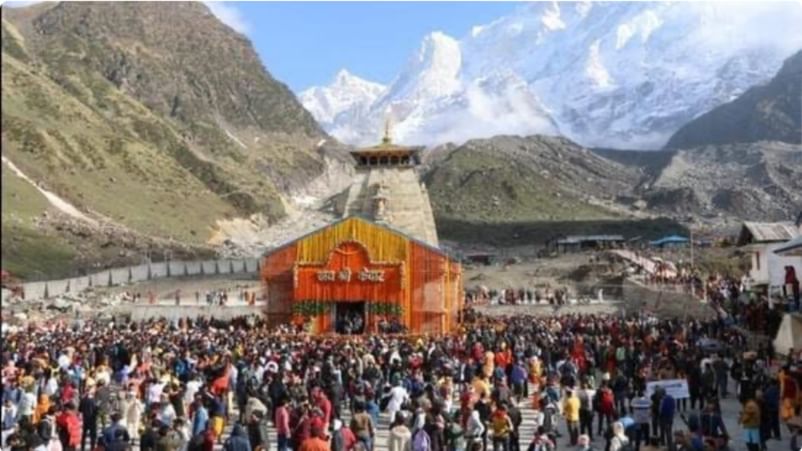Uttarakhand Char-Dham yatra: Pilgrim’s heavy influx may take a toll on environment health of Himalayan state


Dehradun: In light of record-shattering inflow of pilgrims in all the four shrines during annual Char-Dham pilgrimage in Uttarakhand, the focus is again shifted to restricting the footfall of pilgrims in higher Himalayan ranges. This raises more concern when this state has witnessed an unprecedented turnout of devotees this year which is undoubtedly beyond the carrying capacity of these shrines, situated in high altitude zones.
Char-Dham pilgrimage is the backbone of the state’s economy
The annual Char-Dham yatra is the source of employment for a large part of the population in Uttarakhand. This pilgrimage attracts millions of devotees every year, contributing significantly to the state’s tourism revenue. During this pilgrimage, devotees spend on accommodation, transportation, food, and other services, benefiting local businesses. Moreover, this yatra generates employment for a diverse workforce like hoteliers, transport operators, shopkeepers and vendors, guides and porters and people operating mules and horses. Beyond economics, the Char-Dham Yatra holds immense spiritual and cultural value.
Every year upper limit is being set higher
The Himalayan ecosystem is one of the most fragile in the world. The high-altitude shrines are situated in an unstable and dynamic geological region. However, the upper limit of the carrying capacity of these shrines is being increased every year. According to the data provided by Dehradun based organization ‘Social development for communities foundation’ (SDC), a total 47,000 pilgrims came for Char-Dham yatra in 2022, and this number increased to 54,000 in 2023. According to state chief secretary Radha Raturi, this footfall has doubled this year in comparison to last year. Till now, more than 2,76 ,416 pilgrims have visited shrines in five days.
Uncontrolled pilgrim influx affects climatic situation
Therefore, annually, lakhs of pilgrims visit Char-Dham, bringing both economic benefits and environmental challenges. The number of pilgrims registered this year is overwhelming as Char Dham Yatra commenced on 10 May and so far more than 27 lakh pilgrims have already registered in the state. Despite contributing to the state’s revenue, pilgrims also leave behind a significant amount of garbage, particularly plastic bags and wrappers, posing a threat to the environment.
Plastic waste a serious concern during this pilgrimage
The data related to garbage collection in shrines is shocking. According to urban local bodies, Kedarnath produces 1.5-2 tonnes of waste per day, with around 160 kg being plastic waste. Badrinath generates 2.5-3 tonnes of waste. Gangotri produces 4 tonnes of waste and Yamunotri produces less than one tonne of waste per day. For garbage dumping, administrations claim to make multiple waste collection points on pilgrimage routes, but pilgrims often complain that the manpower on ground sometimes throws garbage down the slopes, and there is no segregation specifically for plastic waste.
It raised alarm among scientists, environmentalists and citizens
Char Dham Yatra in Uttarakhand has indeed raised concerns among scientists, environmentalists, and citizens. Uttarakhand’s unique flora includes several exotic herbs with medicinal properties. Unfortunately, due to the increased footfall during the yatra, these herbs face the risk of extinction. These geographical locations are more susceptible to natural disasters. In June 2013, a cloudburst triggered severe floods and landslides throughout Uttarakhand. Anoop Nautiyal, a social activist and founder of SDC said, “Policy makers should pay heed to this massive influx otherwise we may be heading towards more disasters in the state.”
Various recommendations for safeguarding the environment
A Joint Committee appointed by the national green tribunal (NGT) last year in the month of January has proposed various recommendations for safeguarding the environment at these shrines. It emphasized on studying the effects of tourism on biodiversity in the area and regulations of waste management in a forceful way. Apart from collecting the data on soil and water quality in these areas, it advised implementation of solid waste separation at specific sites, with regulating the number of horses allowed in the shrines.
Hence, collaborative efforts between state authorities, devotees, and environmentalists are crucial to safeguard Uttarakhand’s delicate ecosystem and preserve its biodiversity. State authorities need to prioritize environmental conservation alongside pilgrimage management.
